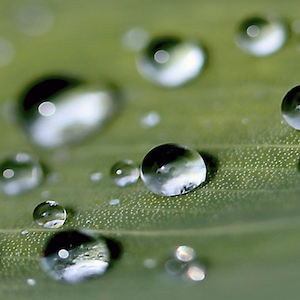On evaluating the hypothesis of shape similarity between soil particle-size distribution and water retention function

Published: 26 October 2023
Abstract Views: 954
PDF: 339
HTML: 16
HTML: 16
Publisher's note
All claims expressed in this article are solely those of the authors and do not necessarily represent those of their affiliated organizations, or those of the publisher, the editors and the reviewers. Any product that may be evaluated in this article or claim that may be made by its manufacturer is not guaranteed or endorsed by the publisher.
All claims expressed in this article are solely those of the authors and do not necessarily represent those of their affiliated organizations, or those of the publisher, the editors and the reviewers. Any product that may be evaluated in this article or claim that may be made by its manufacturer is not guaranteed or endorsed by the publisher.
Similar Articles
- Guomin Gao, Hui Guo, Jing Zhang, Zhenguo Zhang, Tianlun Wu, Hao Lu, Zhaoxin Qiu, Haiyang Chen, Zhen Lingxuan, An efficient headland-turning navigation system for a safflower picking robot , Journal of Agricultural Engineering: Vol. 54 No. 3 (2023)
- Xingye Zhu, Jing Konng, Alexander Fordjour, Joseph Kwame Lewballah, Frank Agyen Dwomoh, Samuel Anim Ofosu, Junping Liu, Hydraulic performance assessment on dynamic fluidic and complete fluidic sprinklers under indoor and outdoor conditions , Journal of Agricultural Engineering: Vol. 55 No. 3 (2024)
- Alessandro Comegna, Antonio Coppola, Giovanna Dragonetti, Time domain reflectometry for dielectric characterization of olive mill wastewater contaminated soils , Journal of Agricultural Engineering: Vol. 51 No. 4 (2020)
- Ester Foppa Pedretti, Daniele Duca, Giuseppe Toscano, Giovanni Riva, Andrea Pizzi, Giorgio Rossini, Matteo Saltari, Chiara Mengarelli, Massimo Gardiman, Riccardo Flamini, Sustainability of grape-ethanol energy chain , Journal of Agricultural Engineering: Vol. 45 No. 3 (2014)
- Alessandro Biglia, Francesco Gresta, Davide Lucien Patono, Lorenzo Comba, Claudio Lovisolo, Paolo Gay, Andrea Schubert, Identification of drought-salinity combined stress in tomato plants by vegetation indices , Journal of Agricultural Engineering: Early Access
- Kishor P. Kolhe, Demelash G. Lemi, Siraj K. Busse, Studies of tractor maintenance and replacement strategies of Wonji Shoa Factory, Ethiopia , Journal of Agricultural Engineering: Vol. 55 No. 1 (2024)
- Sergio Castellano, Giacomo Scarascia Mugnozza, Giovanni Russo, Demetres Briassoulis, Antonis Mistrotis, Silke Hemming, Dries Waaijenberg, DESIGN AND USE CRITERIA OF NETTING SYSTEMS FOR AGRICULTURAL PRODUCTION IN ITALY , Journal of Agricultural Engineering: Vol. 39 No. 3 (2008)
- Shanwen Zhang, Yongyuan Sun, Su Lu, Li Wang, Sian Liu, Zhongliu Wang, Min Dai, Jicheng Gao, Hong Miao, Design and experiment of brush-roller ginkgo leaf picker for the dwarf dense planting mode , Journal of Agricultural Engineering: Vol. 54 No. 4 (2023)
- Francesco Giuseppe Carollo, Vito Ferro, Donatella Termini, ANALYSING LONGITUDINAL TURBULENCE INTENSITY IN VEGETATED CHANNELS , Journal of Agricultural Engineering: Vol. 38 No. 4 (2007)
- Xiaoqiang Du, Tengfei Shen, Kaizhan Chen, Guofeng Zhang, Xiaohua Yao, Juanjuan Chen, Yongqing Cao, Simulation study and field experiments on the optimal canopy shaking action for harvesting Camellia oleifera fruits , Journal of Agricultural Engineering: Vol. 53 No. 3 (2022)
<< < 29 30 31 32 33 34 35 36 37 38 > >>
You may also start an advanced similarity search for this article.

 https://doi.org/10.4081/jae.2023.1542
https://doi.org/10.4081/jae.2023.1542







